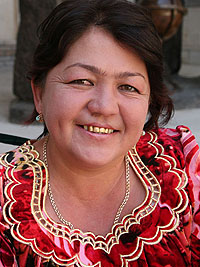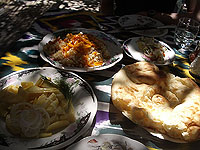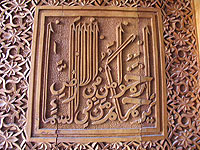 |
|
Uzbekistan - Kashkadarya Province |
||||
|
Population: 2215, 8 thousand As for its territory, Kashkadarya is one of the largest provinces in Uzbekistan. Its convenient geographical location differentiates if from other provinces in the country. Kashkadarya is located in southeast of the country, in the Kashkadarya River Basin and on the western edges of the Pamir-Alai Mountain Range. There are 14 rural districts in the province: Bakhoriston, Guzar, Dekhqonobod, Kamashi, Karshi, Koson, Kasby, Kitob, Muborak, Nishon, Usmon-Yusupov, Chirokchi, Shakhrisabz, and Yakkabog; 12; towns: Beshkent, Guzar, Kamashi, Karshi, Koson, Kitob, Muborak, Tolimarjon, Shakhrisabz, Chirokchi, Yakkabog, and Yangi Nishon; 4 town-type settlements: Dekhkonobod, Karashina, Kashkadarya, and Yakkabogh; and 145 villages. The city of Karshi is the administrative center of the province (558 km away from Tashkent, population 200, 9 thousand). Agriculture: grain crops, cotton, vegetables and cocoon production. The Karshi Desert covers the north and northwestern part of the province. The Nishon Desert covers the south whereas the Sundukly sands - the southwestern parts. The eastern part of the province consists of the Kitob-Kamashi foothills. The climate is continental, partly subtropical and dry. The mountain ranges that have semicircled the province from northwest, east and south prevent the penetration of cold weather and create a convenient atmosphere for the condensation of the western humidity. Winters are warm and summers are hot and long. The main river is the Kashkadarya River with its numerous streams coming from the mountains. Dams and canals make up the arable land oasis of Kitob-Shakhrisabz, Guzar-Kamashi, and the biggest oasis, Karshi. The most developed branches of economy are natural gas and oil mining and processing, cotton production and processing, consumer oil extraction, construction materials production, knitting and food industries. The largest enterprises are the Muborak Gas Reprocessing Plant, the Shurtan Gas and Chemical Corporation, the Koson Consumer Oil Extraction Plant, the Shakhrisabz Canning Factory, Silk Rolling Factory, the Karshi Knitting Factory, and others. There are 14 joint ventures, 124 SME, and 24 cooperative enterprises. Companies such as "Asia Trading", "Uzinterbusiness", "Karimpex" are among them. The leading agricultural activities are cotton, grain and cocoon Production, and livestock farming. The agricultural input of the province makes slightly more than 10 percent of the Uzbekistan 's total agricultural production. Livestock farming and sheep keeping are well developed in the mountainous areas. The total length of railroads is 380,1 km, the length of automohile roads is 11,5 thousand km, 9,7 thousand km of which is covered with asphalt. The total length of the pipelines is 2,106 km. The main pipelines are the Korakhitoi-Karshi, the Shurtan-Muborak, and the Shurtan-Bukhara-Gazly-Tashkent pipelines. There are 470,000 students study attend about 1000 general secondary schools in the province. The educational system is built on kindergartens, lyceums, specialized musical and sport schools, the Karshi State University, branches of the Tashkent Technical University and the Bukhara Technological Institute of Food and Textile Industry. The cultural life of the province is maintained through musical and opera theaters, 500 libraries, and more than 270 clubs and other cultural establishments. More than 5,000 doctors and another nearly 20,000 medical personnel are responsible for the public health in the province. Karshi is the biggest city located in the Kashkadarya River Basin. It was established in early 14th centuiy at the heart of oasis, at the foothills of the Kungurtau highlands. It is just at the crossroads of the caravan roads leading from Samarkand and Bukhara to Afghanistan and India. It was called Nasaf city and was given its current name a little later. Karshi was famous among eastern Bukhara cities for its karakul pelts, fur products, dried fruits, and handcrafted goods in ancient times. Contemporary Karshi is a modern city with wide and decorated streets. Also, it is a major industrial center. The industrial enterprises of the city focus on processing agricultural products. There are cotton processing plants, oil extraction as well as meat and milk processing plants in the city. The construction industry makes materials for factory and housing construction. The city of Muborak, the major gas industry center is located in the southwest of the Karshi Desert. There is a unique gas processing Plant that cleans gas from hydrogen sulphide in city is well planned and there are many tall, modem buildings. The Kitab-Shakhrisabz oasis, the most densely populated part of the Kashkadarya Valley, is located in the upper streams of the Kashkadarya River between the Ghyssar, Yakkabogh and Zarafshon cliffs. This area has a mild climate with warm winters and moderately hot summers with a high rainfall. The unique feature of this place is the broad cotton plantations surrounded by mulberry trees. The major city of this oasis is Shakhrisabz. It is the hometown of the great Amir Temur. In 1998 the city was awarded with the Amir Temur medal. During the period of Amir Temur and his descendants, the city prospered as the center of science, attracting many scientists from all around the world. The most remarkable architectural building is the Oksaroy. Modern Shakhrisabz has retained the image of eastern cities. There are cotton-processing plants, winemaking and fruit and vegetable canning plants in the city. The town of Kitob, located near Shakhrisabz, is famous for its latitude observatory; it is one of five such observatories in the world. The five observatories located on the same latitude are Carloforte in Italy, Yukai and Gaithersburg in the US, and Mizusawa, Japan. |


